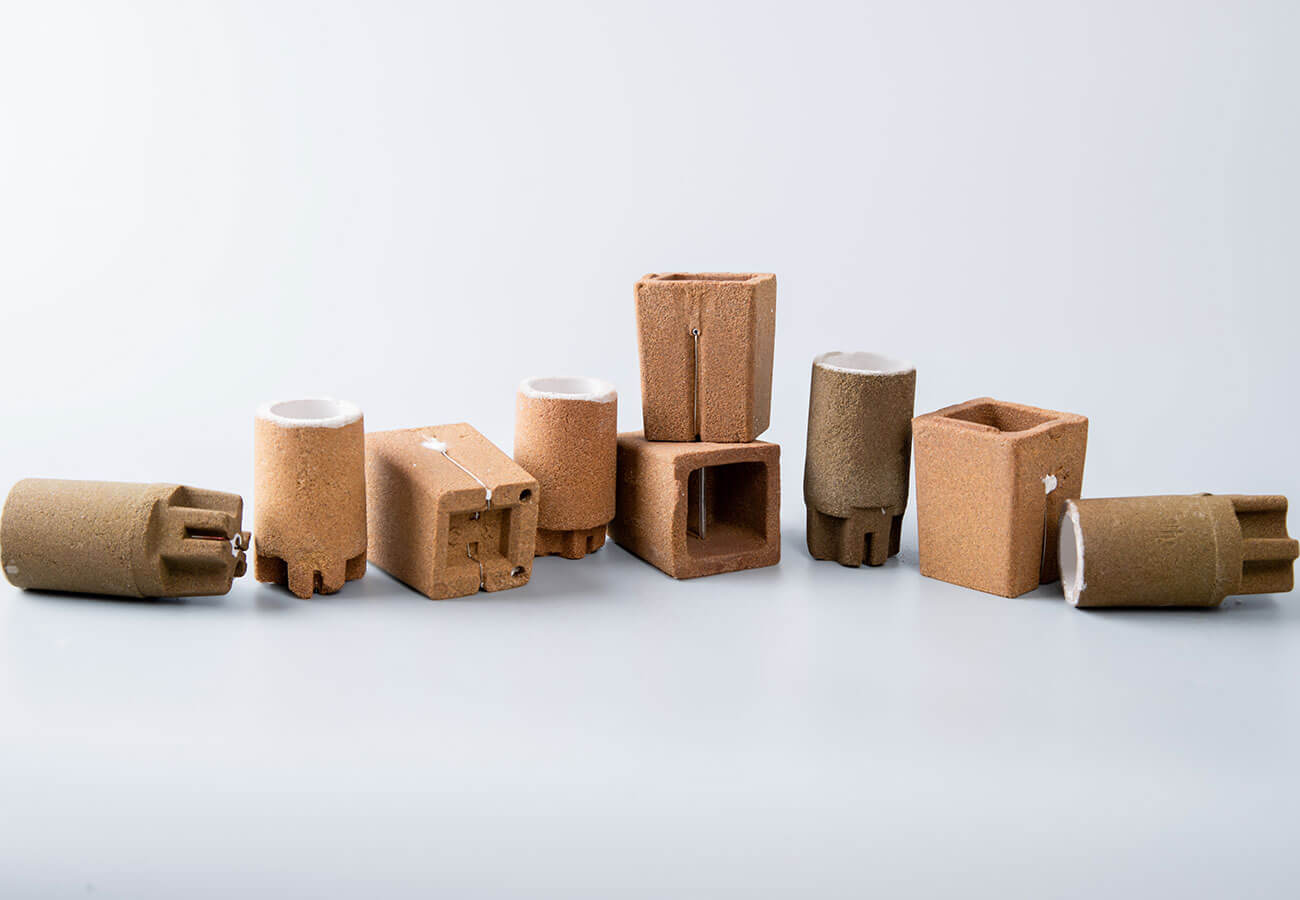Thermal analysis sample cup, also known as carbon cup, is a key tool for rapid detection of molten iron composition in the foundry industry. It can accurately determine core parameters such as carbon equivalent, carbon content, and silicon content within minutes.
Thermal analysis sample cup for casting process
In the casting production process, the precise control of molten iron composition directly determines the mechanical properties and finished product quality of the casting. The thermal analysis sample cup realizes the 3-minute rapid detection of molten iron composition through physical thermal analysis, becoming an indispensable standardized tool for the modern foundry industry.
Basic functions and core values
- Rapid detection parameters: carbon equivalent (CEL), carbon content (C%), silicon content (Si%);
- Performance prediction: tensile strength, hardness, thermal conductivity, etc.;
- Process optimization: auxiliary ductile iron spheroidization rate calculation, inoculant addition amount adjustment.
Through real-time data feedback, foundry companies can quickly understand the composition of molten iron.
Structure and working principle of carbon cup
Core structure analysis
The carbon cup adopts modular design, mainly including the following components:
- Sample cup body: high temperature resistant ceramic material, to ensure that the molten iron quickly solidifies to form white structure;
- High precision thermocouple: K-type thermocouple with quartz protection tube, response speed <0.1 second, temperature measurement range 1200-1450℃;
Thermal analysis principle
After the sample cup is connected to the carbon silicon analyzer, the molten iron is injected into the sample cup, and the system records the temperature-time curve during its cooling and solidification process. The key nodes include:
- Liquidus temperature (TL): the temperature at which the molten iron begins to solidify, which is directly related to the carbon equivalent (CEL);
- Solidus temperature (TS): the temperature at which solidification ends, reflecting the silicon content (Si%).
The temperature characteristic value is converted into chemical composition through mathematical models (such as regression equations), with an error range of: carbon equivalent ±0.15%, silicon content ±0.1%.

Typical application scenarios of carbon cup
Rapid control of hot metal in front of furnace
After smelting in cupola and electric furnace, obtain composition data within 3 minutes to guide the precise addition of alloys such as silicon carbide and ferrosilicon;
In ductile iron production, combine the supercooling (TL-TS) to judge the effect of spheroidizing agent addition to avoid insufficient or declining spheroidization.
Prediction and traceability of casting quality
Predict the tensile strength of castings by liquidus temperature (such as HT250 gray iron requires TL≥1250℃);
Analyze historical data to optimize the smelting process and reduce the risk of batch scrapping due to composition fluctuations.
Special cast iron composition detection
White cast iron: quickly determine the proportion of cementite and control the depth of the cold hard layer;
Heat-resistant cast iron: monitor the influence of alloying elements such as aluminum and chromium on the solidification temperature.
Conclusion
The thermal analysis sample cup has become an important detection tool for foundry companies with its fast, economical and reliable characteristics. For more technical details, please contact SF-FOUNDRY to obtain the latest product catalog and technical support.
- Email: info@sf-foundry.com
- WhatsApp: +8613785803358


